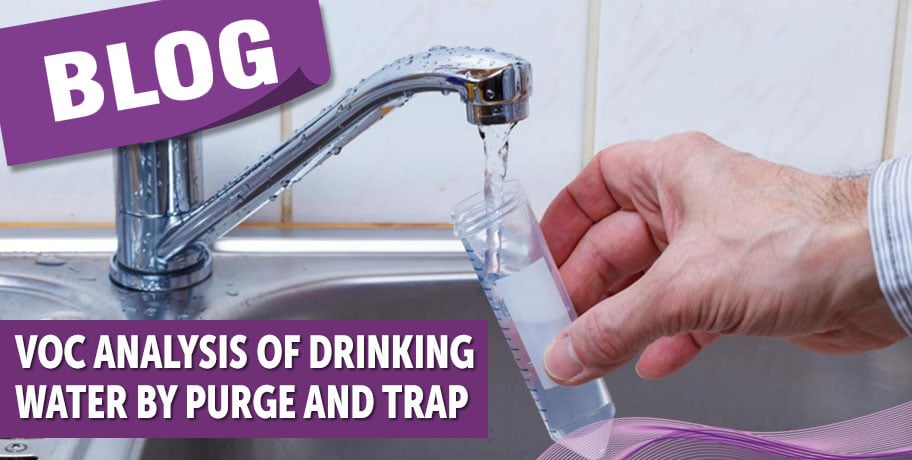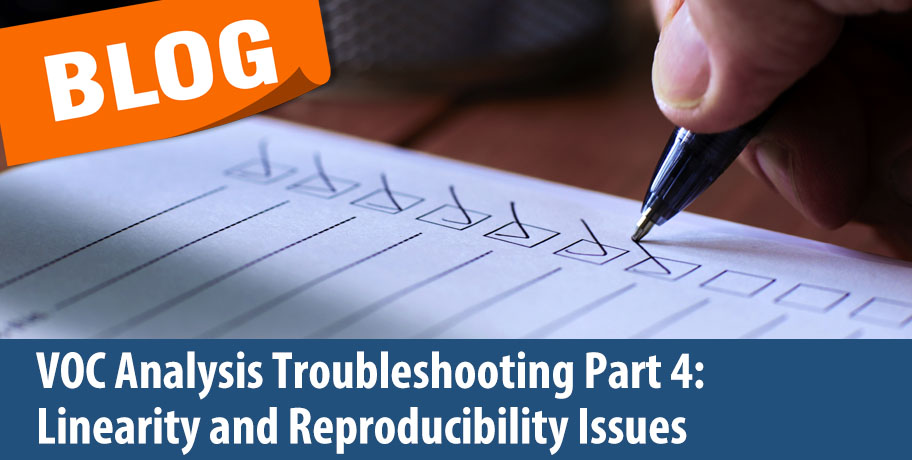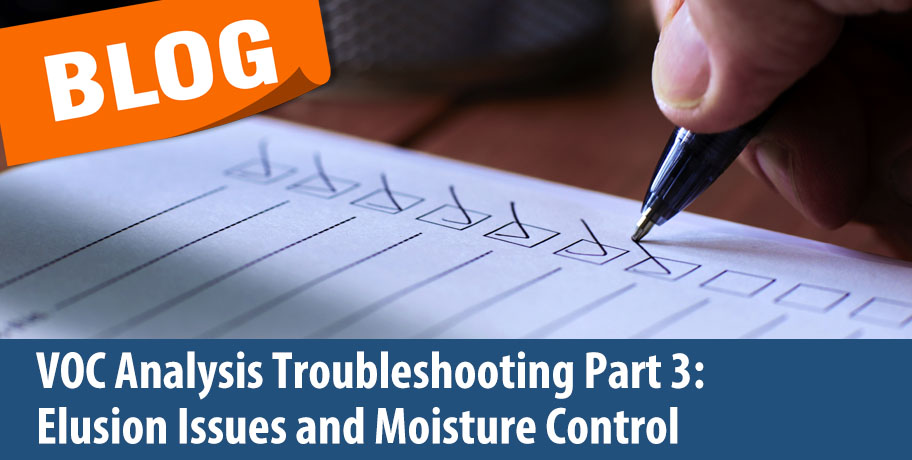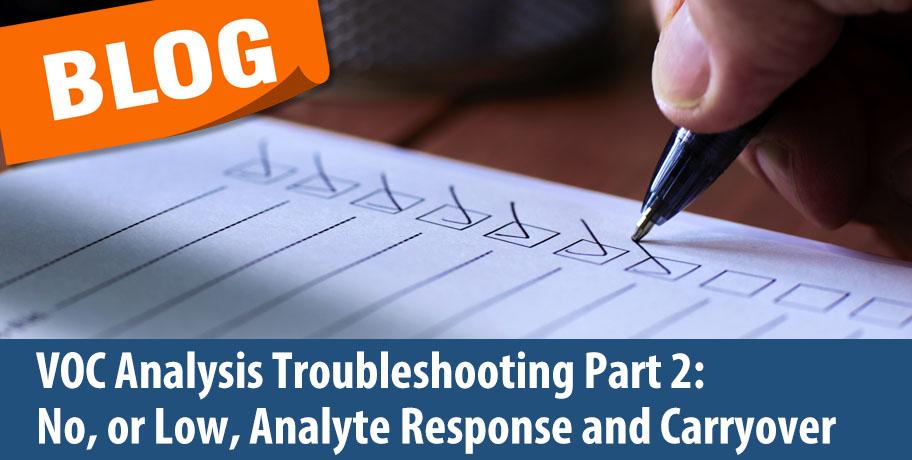In January 2025, the U.S. Environmental Protection Agency (EPA) released an Interim Decision for Ethylene Oxide (EtO)¹. This Interim Decision includes mitigation measures that will reduce exposure to EtO for workers and nearby communities and will work in conjunction with the
EPA Releases Interim Decision for Ethylene Oxide to Protect Workers and Communities
Posted by Amy Nutter on Tue, Feb 04, 2025 @ 03:48 PM
Tags: P&T, Purge and Trap, EPA, Ethylene Oxide
VOC analysis of drinking water by Purge and Trap
Posted by Amy Nutter on Wed, Apr 03, 2024 @ 12:57 PM
If you work in a drinking water lab, you know there can be specific pain points to drinking water analysis. Here at Teledyne LABS, we design, manufacture, and distribute products that help make this analysis easier for our customers. Five of these pain points are:
Tags: VOC, Volatile Organic Compounds, drinking water, P&T, Purge and Trap
One year after the East Palestine, Ohio, train derailment
Posted by Amy Nutter on Mon, Mar 11, 2024 @ 02:57 PM
It has been about one year since the Feb. 3, 2024, toxic train derailment in East Palestine, Ohio, where 20 cars carrying hazardous substances, including vinyl chloride, spilled onto the surrounding area. Vinyl chloride is a toxic material used in plastics production. Since then, a complete remediation of the
Tags: VOC, vinyl chloride, P&T, Purge and Trap
US EPA prioritizing two VOCs used in Purge and Trap analysis for risk evaluation
Posted by Amy Nutter on Mon, Feb 05, 2024 @ 08:57 AM
Late last year, the United States Environmental Protection Agency (EPA) announced it will be prioritizing five toxic chemicals for risk evaluation under the Toxic Substances Control Act. During this process, if the EPA designates these chemicals as High Priority Substances, they will undergo an extensive comprehensive study. These studies will be crucial to helping protect people from toxic exposure.
Tags: VOC, Volatile Organic Compounds, P&T, Purge and Trap
Has your laboratory been having issues obtaining helium for your environmental analysis? As helium supplies become scarcer and more expensive, you may have been seeking alternative carrier gases or ways to conserve helium without sacrificing system performance. This blog will explore ways to conserve helium during your purge and trap (P&T) analysis.
Tags: helium, VOC, Teledyne Tekmar, P&T, Purge and Trap
Troubleshooting Part 6: Benchmark Troubleshooting Tool
Posted by Amy Nutter on Fri, Oct 20, 2023 @ 01:18 PM
In this last installment of our volatile organic compound (VOC) analysis troubleshooting series, the benchmark test will be covered. This benchmark test is available in the Teledyne Tekmar TekLink software tools menu. The tool allows for full electromechanical testing, including valving, heaters, vial handling systems, liquid delivery system, inputs and outputs.
Tags: VOC, Teledyne Tekmar, Volatile Organic Compounds, Purge and Trap
Troubleshooting Part 5: Six warning signs of a leak in your Purge & Trap and ways to detect the source
Posted by Amy Nutter on Wed, Sep 06, 2023 @ 04:07 PM
Throughout this troubleshooting series, in nearly every topic discussed, the answer led to performing a leak check on the Purge and Trap (P&T). This part of the series will go over the preventative maintenance program and understanding the leak check troubleshooting tool in Teklink, the Teledyne Tekmar P&T software.
Tags: VOC, P&T, Purge and Trap, Atomx XYZ
Troubleshooting Part 4: Linearity and reproducibility issues
Posted by Amy Nutter on Fri, Aug 11, 2023 @ 11:12 AM
This is the forth in our Troubleshooting series for VOC Analysis.
- Part one is linked here, VOC Analysis Troubleshooting Part 1: How to Begin Troubleshooting
- Part two is linked here, Troubleshooting Part 2: No or low analyte response and carryover
- Part three is linked here: Elusion Issues and Moisture Control
Troubleshooting linearity and reproducibility issues in your systems can be difficult. Problems with linearity and reproducibility can make calibrating your systems frustrating, and if internal standards are varying, it can cause all other target compound to look unstable.
Tags: VOC, P&T, Purge and Trap
Troubleshooting Part 3: Elution issues and moisture control
Posted by Amy Nutter on Fri, Jul 28, 2023 @ 01:33 PM
This is the third in our Troubleshooting series for VOC Analysis.
- Part one is linked here, VOC Analysis Troubleshooting Part 1: How to Begin Troubleshooting
- Part two is linked here, Troubleshooting Part 2: No or low analyte response and carryover
Part three will discuss elusion issues and moisture control for VOC analysis.
Tags: VOC, Teledyne Tekmar, Volatile Organic Compounds, P&T, Purge and Trap, Moisture Control
Troubleshooting Part 2: No or low analyte response and carryover
Posted by Amy Nutter on Fri, Jun 09, 2023 @ 03:34 PM
This is the second in our Troubleshooting series for VOC Analysis.
Part one is linked here, VOC Analysis Troubleshooting Part 1: How to Begin Troubleshooting
Part 2 will discuss No, or Low, Analyte Response and Carryover.
Troubleshooting your instruments can be a frustrating process, but I hope this series eases some of that pain and helps you through it. If you’re dealing with no or low response from your analytes, you first need to know if the analytes are even getting to the Gas Chromatograph and Mass Spectrometer (GC-MS). Following the advice in part one of this series, start with a direct injection into the GC of the same standards you use on your Purge and Trap (P&T), to confirm normal operation of the GC-MS. If you see poor chromatography and resolution or reduced response, you should change your inlet liner and clip the column.
Tags: VOC, Purge and Trap









